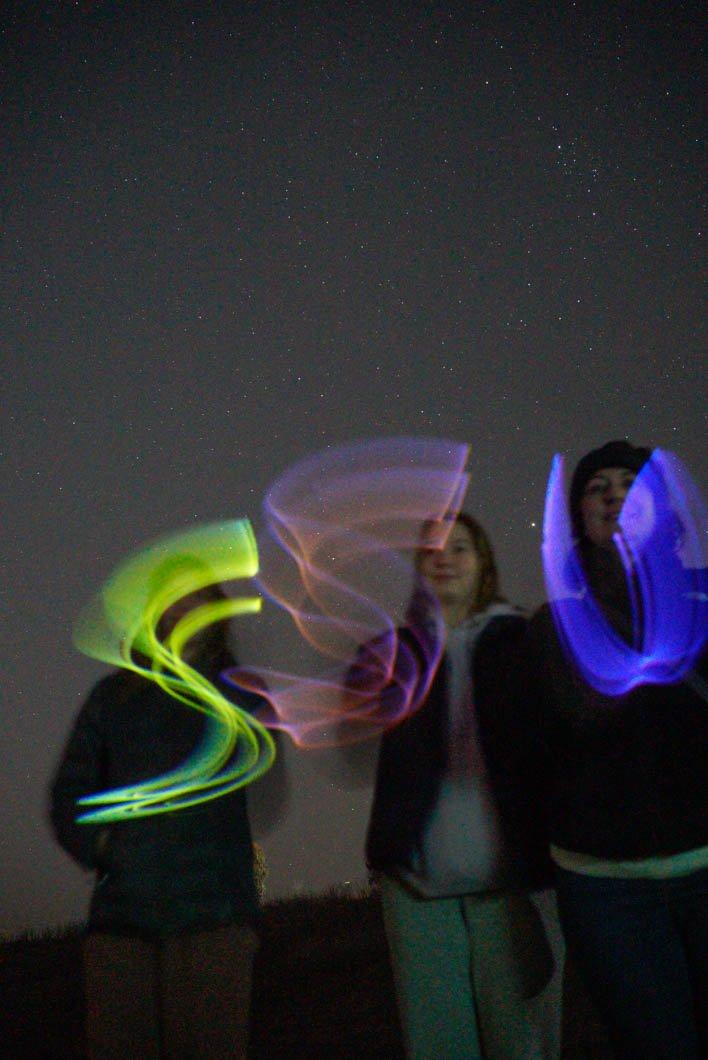COURTESY // phys-astro.sonoma.edu
Seawolves at the pubic viewing night in Nov. of 2022.
Just after the sunset seawolves began to gather near the campus observatory for an interesting look at the night sky. The Astronomy and Physics Department hosted a public viewing night which was open to all who wished to attend. At 9 p.m. there was already a line that stretched along the track fence which the observatory is next to. The line was to get into the observatory which had two telescopes as well as three other low-light telescopes outside. The line was orderly and filled with students who were excited to see some stars and planets.
There was also a photo station just before the observatory entrance where you could have your picture taken with the illuminated star in the night sky as the backdrop. Thankfully the wait for the telescopes passed by like a shooting star thanks to the entertaining professors who used laser pointers to point out planets like Mars and Venus.
The laser pointer was also used to mimic the path of the sun and trace constellations like Orion’s belt and the big dipper. There were also free cookies for those who got there early.
The reason for the big crowd was partially due to the fact that some professors made attending an extra credit assignment. Madison Schmidt, a second-year English major who was there with a friend said, “I came here because my friend said she needed the extra credit points but it was really interesting seeing all the constellations being pointed out.” Other than extra credit students also attended for their love of space. Brendan Jackson, a third-year psychology major said, “Looking at the night sky and seeing the stars has always been interesting to me even though astronomy isn’t my major. It’s fun learning from people who know it.”
The event was insightful and fun for the students who were able to see everything. Students like Eric Martinez, a third-year business major, expressed his thoughts on the event by commenting on how “professional and nice looking” the equipment that was being used looked. Students who were not astronomy majors had a fun time learning about where the locations of the planets and constellations were. There were also students who were helping with the telescopes and explaining what was being seen through them.
The weather at the start of the night was perfect for the event with no clouds in sight. However a little later on in the night the clouds did start to roll in and obscure some of the constellations. After the first major group of students and community members had their turn at the telescopes there was another small group who got in line.
The schedule for these viewing nights is subject to change depending on the weather. Clouds and fog can have a major impact on what is visible.





![[Both photos courtesy of sonoma.edu]
Ming-Ting Mike Lee stepped in as the new SSU president following Sakakis resignation in July 2022](https://sonomastatestar.com/wp-content/uploads/2024/04/CC4520AB-22A7-41B2-9F6F-2A2D5F76A28C-1200x1200.jpeg)


























